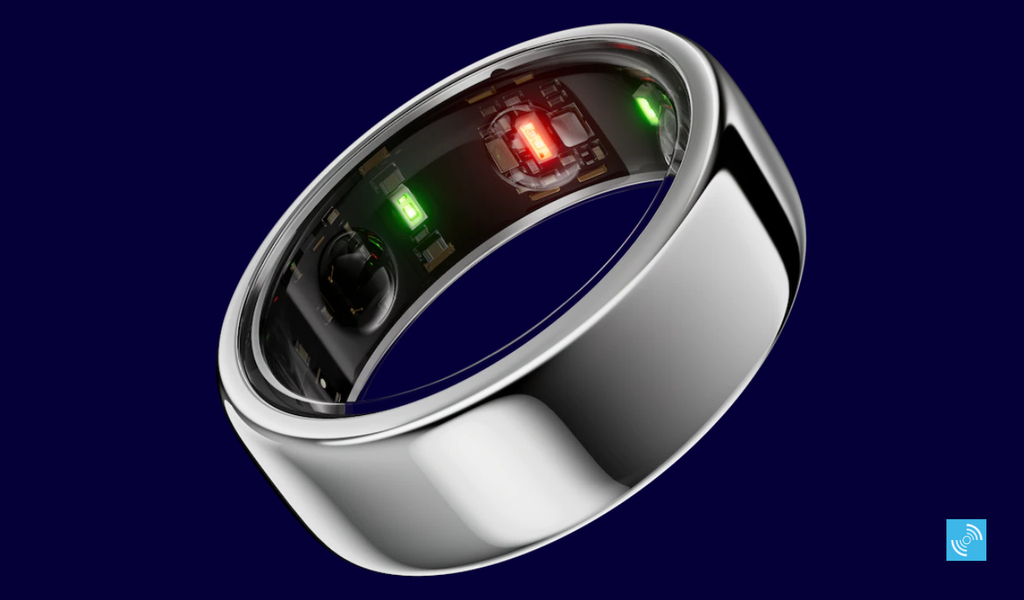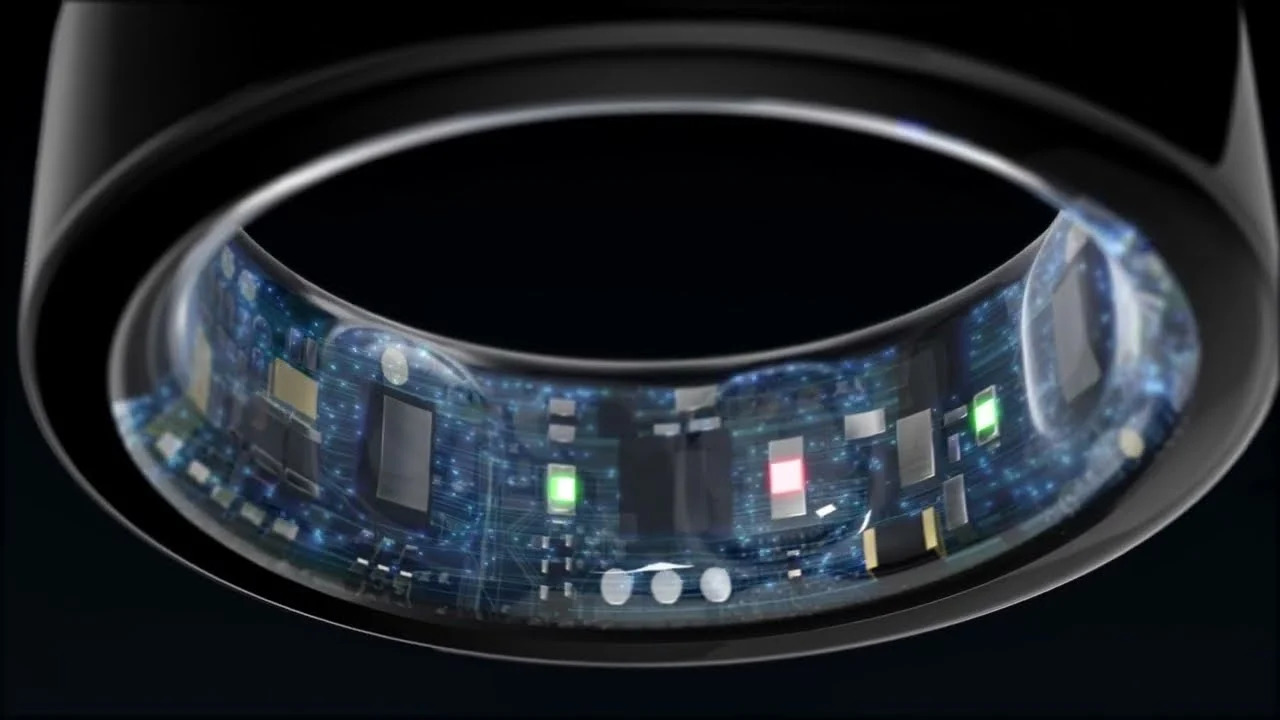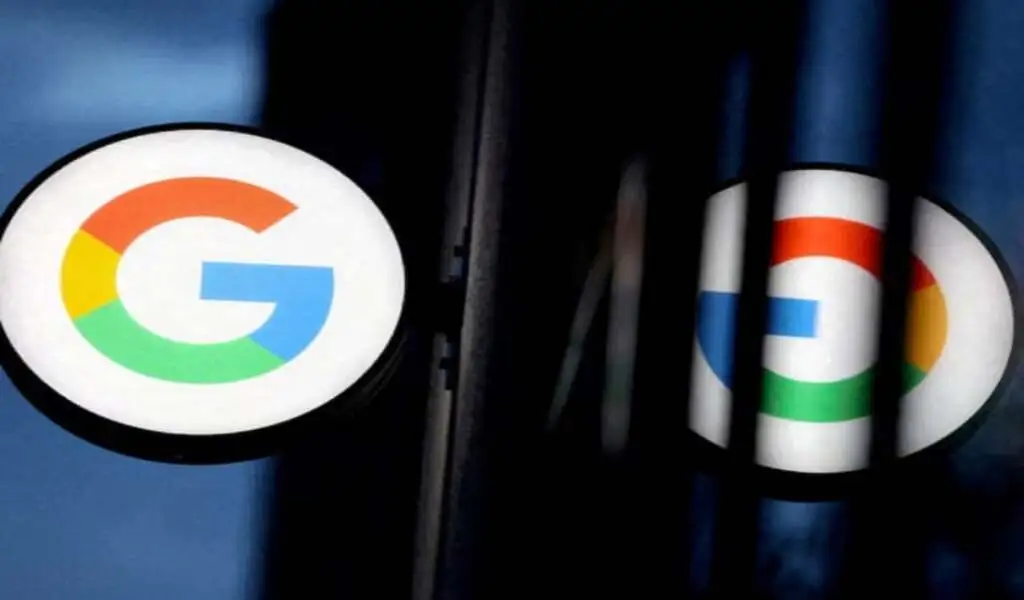Tech
What Exactly Are Smart Rings, And How Do They Differ From Other Wearables?

(CTN NEWS) – In an era where technology increasingly interlinks us, wearable devices have ingrained themselves as an integral facet of our day-to-day existence.
Ranging from fitness trackers to smartwatches, these gadgets serve a myriad of purposes. Nonetheless, a captivating and novel manifestation has emerged in the domain of wearable technology: the Smart Ring.
Exploring the Realm of Smart Rings
Within the confines of this extensive piece, we embark on an exploration to elucidate the concept of smart rings—uncovering their essence, unraveling their operational mechanisms, scrutinizing their merits and drawbacks, and distinguishing their characteristics from other wearable contrivances.

Defining Smart Rings and Unveiling Their Mechanism
A smart ring constitutes a diminutive wearable computing marvel that snugly rests on your finger.
Despite their compact dimensions, these devices wield impressive capabilities, boasting an array of sensors and the ability to execute a diverse array of functions akin to their more substantial wearable counterparts.
The operational framework of smart rings hinges upon their seamless interaction with fellow intelligent gadgets, such as smartphones, facilitated by wireless communication protocols like Bluetooth or NFC (Near Field Communication).
The ring’s embedded sensors diligently gather data, subsequently subjecting it to processing before dispatching it to a corresponding app residing on the paired device.
The nature of this data varies in consonance with the smart ring’s designated purpose, encompassing tasks as varied as heart rate and sleep pattern monitoring, as well as hand gesture recognition for the orchestration of smart home appliances.
Capabilities of a Smart Ring
The functionalities of smart rings span a wide spectrum, contingent upon the sensor types and software algorithms they incorporate.
Outlined below are several common applications:
- Health and Fitness Tracking: Similar to conventional wearable fitness trackers, smart rings excel at monitoring physical activities, heart rates, sleep patterns, blood oxygen saturation levels, and stress indicators.
- Smart Home Management: A subset of smart rings wield the ability to oversee other smart home devices, affording users the convenience of regulating thermostats, extinguishing lights, or even altering TV channels through uncomplicated hand gestures.
- Touchless Payments: Certain smart rings integrate NFC technology, enabling seamless contactless payments and amplifying user convenience.
- Notification Alarms: A multitude of smart rings possess the functionality to promptly notify users about incoming calls, messages, and other pivotal notifications.

Benefits of Smart Rings
Subtle and Practical: Smart rings present a less conspicuous alternative to smartwatches and fitness bands. Their unobtrusive nature makes them a practical and inconspicuous choice in wearable technology.
Prolonged Battery Performance: Leveraging their compact size and specialized features, smart rings frequently offer extended battery life, with select models lasting up to a week on a solitary charge.
Fusion of Style and Function: Smart rings seamlessly blend technology and aesthetics, arriving in an assortment of designs that often seamlessly integrate with conventional jewelry. This harmonious convergence enables users to showcase their technological prowess while upholding their personal style.
Drawbacks of Smart Rings
Restricted Display Functionality: Owing to their compact dimensions, smart rings typically lack screens. Consequently, users must lean on a connected smartphone for data visualization and interaction.
Limited Storage and Processing Power: The diminutive size of smart rings translates to constrained storage and processing capabilities compared to their larger wearable counterparts. They heavily depend on paired devices for data handling and storage.
Cost Consideration: The incorporation of advanced technology within a petite form factor can render smart rings pricier than conventional wearable devices.
Adaptation Challenges: Given their novelty, integrating smart rings into one’s daily routine might pose a challenge for some users. Additionally, finding the optimal size and style to match personal preferences could be an aspect requiring careful consideration.

Distinguishing Smart Rings from Other Wearables
While sharing akin functionalities with smartwatches and fitness bands, smart rings differentiate themselves through several key aspects:
- Form Factor: In stark contrast to other wearable devices, smart rings boast a markedly smaller and less conspicuous design. This understated and compact profile appeals to aficionados of minimalist gadgets.
- Tailored Functions: While smartwatches and fitness bands often aspire to be versatile all-in-one gadgets, smart rings gravitate towards specialized utilities. Whether it’s monitoring vital signs, facilitating contactless payments, or orchestrating smart devices, each smart ring addresses specific user requirements.
- Aesthetic Appeal: Smart rings excel in the realm of aesthetics, seamlessly harmonizing with other jewelry pieces. They effortlessly merge fashion and function, becoming an elegant accessory that enhances personal style.
- Comfort and Usability: Offering an alternative to potentially cumbersome wristbands, smart rings prioritize user comfort and ease of use.
- Subtlety: Smart rings introduce an unparalleled level of discretion, eclipsing larger wearables in this aspect. Their unobtrusive notifications and ability to seamlessly integrate with conventional jewelry contribute to their inconspicuous allure.
In essence, smart rings epitomize an intriguing amalgamation of fashion, utility, and subtlety, establishing a distinctive niche within the landscape of wearable technology. Their seamless integration into our daily lives showcases the true essence of wearable innovation.
The Surge in Smart Ring Popularity
The realm of smart rings is undergoing a significant surge in popularity, attracting a plethora of established and up-and-coming brands that are delving into this domain with inventive products and solutions.
Each smart ring is endeavoring to carve out a distinct identity for itself. Noteworthy examples encompass the well-established Oura ring, a prominent player in the current industry landscape, and the emergent Ringconn, reportedly conceptualized by a medical professor, which boasts meticulous and precise sleep tracking capabilities alongside other comprehensive health metrics.
Furthermore, certain smart ring labels have elected to concentrate on specific functionalities, such as facilitating payments.
As we delve further, let’s explore some of the prevalent contenders in this domain.

Prominent Smart Ring Options
- Oura Ring: Renowned for its comprehensive sleep tracking and health insights, the Oura Ring offers intricate data on sleep quality, readiness, and daily activity levels.
- Ringconn: Crafted by a medical specialist, the Ringconn introduces meticulous and precise sleep tracking and an array of health metrics within the industry.
- Motiv Ring: A fitness-focused contender, the Motiv Ring adeptly monitors heart rate, step counts, and boasts online account security features.
- McLEAR Ring: Gaining popularity for its contactless payment functionality, the McLEAR Ring enables seamless transactions with a simple tap.
- Ringly: Catering predominantly to women, the Ringly merges style with functionality, delivering notifications and basic activity tracking.
- Noise Luna Ring: A recent entrant into the Indian market, the Luna Ring by Noise offers an extensive repertoire of over 70 health metrics, including heart rate monitoring and temperature sensors.
- boAt Smart Ring: The esteemed Indian brand, boAt, is preparing to launch its boAt Smart Ring, constructed from metal and ceramic. This innovation encompasses sensors for heart rate, SpO2 levels, sleep monitoring, and more.
- Samsung Galaxy Ring: A notable mention currently in the developmental phase, the Samsung Galaxy Ring is poised to become a transformative force in the smart ring domain. Anticipated to achieve mainstream recognition, recent reports suggest that the Galaxy Ring’s development phase is nearing completion, with mass production expected soon. Due to the rigorous certification processes involved, the Galaxy Smart Ring’s launch is anticipated in 2024, possibly coinciding with the release of the Galaxy S24 series.
A Universe Embracing Intelligence
Smart rings represent merely the initial glimpse into the swiftly burgeoning realm of intelligent gadgets.
This burgeoning landscape encompasses an array of innovations, from smart eyewear furnishing real-time information overlays to intelligent footwear meticulously monitoring your steps and running form.
A paradigm shift is unfolding, where virtually everything is undergoing a transformation into the ‘smart’ domain. These advancements extend beyond mere convenience, ushering in a future where technology seamlessly intertwines with our everyday lives.
As we embark upon an era marked by interconnectedness, the trajectory is set for an influx of additional smart categories akin to smart rings, destined to emerge and evolve in the forthcoming years.
RELATED CTN NEWS:
WhatsApp Introduces Screen Sharing In Video Calls: Future Developments And Its Implications
Tempering Expectations: Mark Zuckerberg Proposes Date For His Fight With Elon Musk

Tech
US: A Judge Mandates that Google Allow Competing App Stores to Access Android

(VOR News) – The ruling is that Google, the greatest technology firm in the world, is required to make its Android smartphone operating system available to merchants that supply applications that are in direct rivalry with Google’s. This decision was reached by a judge in the United States of America.
The Android Play store, which is owned and operated by Google, was found to be an example of an illegal monopoly arrangement by a jury in the state of California on Monday. The finding was reached by a jury. Monday is the day that this decision was come to.
An earlier federal judge ruled Google’s search engine illegal.
This finding, which came after that decision, has forced the company to suffer yet another setback. As a result of the corporation having already encountered its initial obstacle, this decision has been established. This particular decision was made by the judge during the month of August, when the month was in progress.
In light of the fact that the decision was made, what exactly does it mean that the choice was accepted?
In accordance with the verdict, Google is obligated to make it possible for users to download Android app stores that are offered by third-party competitors. For a period of three years, the corporation is prohibited from imposing restrictions on the usage of payment mechanisms that are integrated into the application.
In addition, it is important to keep in mind that Google does not possess the right to impose restrictions on the utilization of ways to make payments online.
Additionally, the verdict makes it unlawful for Google to give money to manufacturers of smartphones in order to preinstall its app store. Smartphone manufacturers are prohibited from doing so.
Furthermore, it prevents Google from the possibility of sharing the revenue that is generated by the Play store with other companies that are in the industry of delivering mobile applications.
In addition to this, the court has mandated the establishment of a technical committee that will be made up of three different people chosen at random.
The committee will be responsible for monitoring the implementation of the reforms and finding solutions to any disagreements that may occur as a consequence of the implementation of the reforms while they are being implemented. This task will fall under the committee’s purview so that it may fulfill its duties.
However, certain components were allowed to be put into action until July 1st, despite the fact that the judge’s statement suggested that the ruling would take effect on November 1st. The statement was the basis for the ruling, which ultimately became effective.
Particularly, I wanted to know what Google’s reaction would be.
There is a fact that Google does not adhere to this directive, which has been brought to their attention. This document argued that the alterations that the judge had ordered to be made would “cause a range of unintended consequences that will harm American consumers, developers, and device makers.”
The judge had ordered the modifications to be implemented. The alterations were to be carried out as indicated by the judge’s ruling. The judge made it clear that he expected these revisions to be carried out in accordance with his guidance.
The company’s regulatory affairs vice president, Lee-Anne Mulholland, provided the following statement: “We look forward to continuing to make our case on appeal, and we will continue to advocate for what is best for developers, device manufacturers, and the billions of Android users around the world.”
On average, over seventy percent of the total market for smartphones and other mobile devices is comprised of mobile devices that are powered by the Android operating system. Both smartphones and other small mobile devices are included in this category.
In the event that the Play app store continues to be shown on the home page and that other Google applications are pre-installed prior to the installation of the Android application, smartphone manufacturers are entitled to install the Android application at no cost at their discretion.
Additionally, the Android application can be installed on devices that are manufactured for smartphones.
SOURCE: DWN
SEE ALSO:
Over The Planned “Link Tax” Bill, Google Threatens to Remove NZ News Links.
Tech
WhatsApp Now Features a “Mention” Tool for Status Updates and Stories.

(VOR News) – Those who use WhatsApp now have the ability to mention other people in their stories or status updates as a consequence of a feature that was only recently enabled on the platform.
Previous to this point, this capability was not available. It wasn’t until quite recently that this capability became available to the public.
According to the information that was provided by the company, users now have the opportunity to tag close friends in their stories, and the person who is mentioned will have the option to go back and re-share an earlier version of that story. This information was provided by the company. The corporation was kind enough to reveal this information to us.
Because of a new feature that has been added to the WhatsApp app, users now have the opportunity to like individual stories and status updates.
This capability was previously unavailable to WhatsApp users.
A significant amount of progress has been made in this context. Alternative readers now have the chance to “like” a work, which is comparable to liking a post on Facebook. This feature was introduced in recent years. When compared to the past, this is a tremendous shift.
At one point in time, viewers were only permitted to observe the total number of views that a particular story had gotten. These restrictions were eliminated in later versions of the software.
Additionally, it is essential that the likes and reactions to a story be kept anonymous during the entire process. One of the factors that contributes to the general mystery that surrounds this characteristic is the fact that this is one of the elements.
The person who brought it to the attention of others is the only person who will be able to judge who enjoyed it and who did not care about it. These individuals will be able to make this determination.
A notification will be issued to the individual who was referenced earlier in the sentence and who was named in the story or status update that was discussed. A notification of this nature will be sent to the individual via WhatsApp.
This message will be sent to the user in question whenever that person makes a reference to another person while they are in the process of elaborating on a narrative or updating their status. You will receive a notification alerting you that you have been tagged in the narrative.
This notification will be delivered to the person who receives this message. In addition, students will be provided with the opportunity to re-share the tale for themselves.
It is important to note that if the names of individuals who have been referenced in a narrative or a status update are included in any of these, then the names of those individuals will not be accessible to any third party through any of these. In light of the fact that the identities of those individuals will be concealed from public disclosure, this is the condition that will be required.
While WhatsApp recently made the announcement that it will be incorporating this functionality, it is highly likely that not all users will have access to it at the same time.
This is despite the fact that WhatsApp recently made this announcement.
Despite the fact that WhatsApp has only recently made a public announcement that it will move forward with the deployment, this is the situation that has presented itself.
As soon as a short period of time has elapsed, access will be made available to each and every person on the entire world.
Additionally, WhatsApp has hinted that new functionalities might be introduced to the status and updates tab in the future months.
The purpose of these capabilities is to provide users with assistance in maintaining healthy connections with the individuals who play a vital role in their living experiences. This is done in order to give users with support in maintaining close relationships with the folks who are the subject of the inquiry.
It is with the purpose of supporting users in successfully keeping close ties with the individuals in question that this step is taken.
SOURCE: DN
SEE ALSO:
Over The Planned “Link Tax” Bill, Google Threatens to Remove NZ News Links.
Accenture and NVIDIA Collaborate to Enhance AI Implementation.
Tech
Over The Planned “Link Tax” Bill, Google Threatens to Remove NZ News Links.

(VOR News) – Google has sent a strong message to the New Zealand government, threatening to stop boosting local news content should the Fair Digital News Bargaining Bill become law.
The law, put up by the Labour government and backed by the coalition in power at the moment, mandates that digital companies such as Google pay back news organizations for links to their material.
News publishers, on the other hand, charge the tech giant with “corporate bullying.”
Google says this measure may have unanticipated effects.
Google New Zealand’s country director, Caroline Rainsford, voiced her worries that the law, which is being referred to as a “link tax,” is not doing enough to support the media industry in New Zealand right now.
She underlined that Google would have to make major adjustments if the previously mentioned law were to pass, including cutting off links to news articles from its Search, News, and Discover platforms and cutting off financial ties with regional publications.
According to Rainsford, similar legislation has been proposed and approved in other nations including Australia and Canada, but it has not been proven to be effective there and breaches the principles of the open web.
She drew attention to the fact that smaller media outlets will be most negatively impacted, which will limit their capacity to reach prospective audiences.
Google says its alternative options will protect smaller, local media from negative effects.
Conversely, it conveys apprehension regarding the possible fiscal obligations and vagueness of the legislation, which it feels generates an intolerable level of ambiguity for enterprises functioning within New Zealand.
The New Zealand News Publishers Association (NPA) has reacted to Google’s warnings by alleging that the internet behemoth is using coercive tactics.
They specifically contend that the need for regulation stems from the market distortion that Google and other tech giants have created, which has fueled their expansion into some of the most significant corporations in global history.
The legislation aims to create a more equal framework that media businesses can use to negotiate commercial relationships with technological platforms that profit from their content.
New Zealand Media Editors CEO Michael Boggs stated that he was in favor of the bill, citing the fact that Google now makes a substantial profit from material created by regional publications.
He also emphasized that the use of artificial intelligence by Google—which frequently makes references to news articles without giving credit to the original sources—highlights the significance of enacting legislation.
Paul Goldsmith, the Minister of Media and Communications, has stated that the government is now evaluating various viewpoints and is still in the consultation phase.
He stated that the government and Google have been having continuous talks and will keep up these ongoing discussions.
However, not all political parties accept the validity of the Act.
The ACT Party’s leader, David Seymour, has voiced his displeasure of the proposal, saying that Google is a game the government is “playing chicken” with. He threatened the smaller media companies, saying that they would suffer from worse search engine rankings if the internet giant followed through on its promises.
Seymour contended that it is not the government’s responsibility to shield companies from shifts in the market brought about by consumer preferences.
The things that have happened in other nations are similar to what has happened in New Zealand.
Google has agreements with a number of Australian media firms that are in compliance with its News Media Bargaining Code. These agreements contain provisions that permit an annual cancellation of these agreements.
Due to the government’s decision to exempt Google from the Online News Act, the company has committed to supporting news dissemination by contributing annually to the Canadian journalistic community.
The New Zealand measure is consistent with global approaches aimed at regulating the relationships that exist between technology corporations and media organizations.
It’s hard to say what will happen with the Fair Digital News Bargaining Bill as the discussion goes on. Google and the New Zealand media landscape are preparing for what might be a protracted legal battle.
SOURCE: TET
SEE ALSO:
Accenture and NVIDIA Collaborate to Enhance AI Implementation.
-

 News4 years ago
News4 years agoLet’s Know About Ultra High Net Worth Individual
-
Entertainment2 years ago
Mabelle Prior: The Voice of Hope, Resilience, and Diversity Inspiring Generations
-
News11 years ago
Enviromental Groups Tell Mekong Leaders Lao Dam Evaluation Process Flawed
-

 Health4 years ago
Health4 years agoHow Much Ivermectin Should You Take?
-

 Tech3 years ago
Tech3 years agoTop Forex Brokers of 2023: Reviews and Analysis for Successful Trading
-

 Lifestyles3 years ago
Lifestyles3 years agoAries Soulmate Signs
-

 Entertainment3 years ago
Entertainment3 years agoWhat Should I Do If Disney Plus Keeps Logging Me Out of TV?
-

 Health3 years ago
Health3 years agoCan I Buy Ivermectin Without A Prescription in the USA?